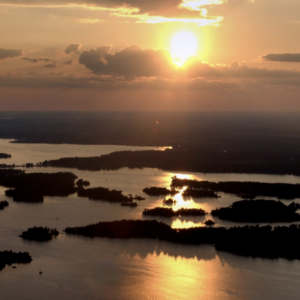The COSEWIC Spring Meeting – Updates on At-Risk Species in Canada
In April, the Committee on the Status of Endangered Wildlife in Canada (COSEWIC) met in Victoria, British Columbia to assess the risk of extinction for 51 Canadian wildlife species.
A highlight on some of the species that were reviewed during the meeting:
100% of the naturally-occurring global breeding population of the Whooping Crane is in Canada. The Crane was on the brink of extinction until efforts by Canada and the US allowed the species to repopulate. Canada’s Wood Buffalo National Park, a designated UNESCO World Heritage Site, is home to the entire nesting habitat for the only wild population of Whooping Crane. The Canadian breeding population of Whooping Crane, which is a small one, is confined to a limited breeding area and only one wintering location, making the species more vulnerable to catastrophic events and human threats, according to COSEWIC. There are fewer than 250 individuals and the species has been confirmed as Endangered (previously assessed as Endangered in 1978 and 2000).
Range: Northwest Territories, Alberta, Saskatchewan, Manitoba
The Rusty-patched Bumble Bee
This once important, and abundant, pollinator for native plants in southern Ontario is now facing a risk of extinction as surveys over the past decade recorded findings of only 3 individuals – a decline of at least 99% over the past 30 years! According to COSEWIC, the species may be facing a sharp decline as a result of pesticides, disease and parasites, and habitat loss. It has been assessed as Endangered, showing that there is much concern regarding ecologically and economically important pollinators.
Range: Ontario and Quebec
 The Monarch
The Monarch
The favorite butterfly of many may be uplisted from Special Concern (previously assessed as Special Concern in 2001) to Threatened in the near future, although the population numbers in the millions to over one billion. Threats to the species are mainly due to logging in its overwintering areas in the Oyamel Fir Forests of Central Mexico where 90% of the population overwinters. The Monarch is also known to overwinter in the coastal regions of California.
Range: British Columbia, Alberta, Saskatchewan, Manitoba, Ontario, Quebec, New Brunswick, Prince Edward Island, Nova Scotia
Assessments for many vascular plants, molluscs and amphibians were also undertaken. Additionally, the meeting assessed different fishes, highlighting a decline in most Atlantic Cod populations.
The April meeting was the last to be presided by Dr. Jeff Hutchings. Nature Canada would like to take this opportunity to commend and thank him for his great efforts and contributions towards conserving Canada’s biodiversity during his two terms as COSEWIC Chair.
Photos: Whooping Cranes by USFWS-Ryan Haggerty; Monarch by Lynne Epps




